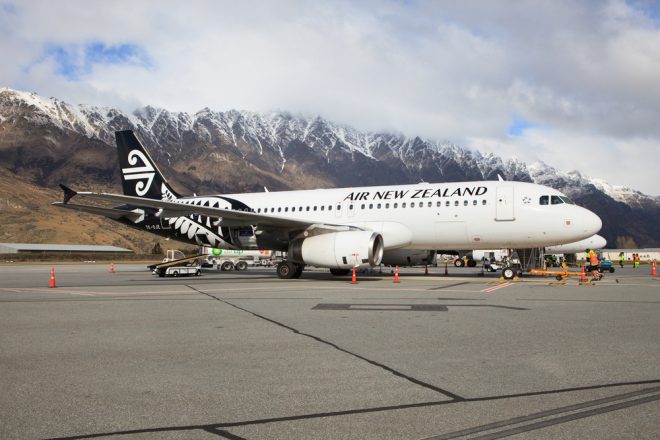Một số người đang cố gắng trở lại New Zealand một cách tuyệt vọng cảm thấy như thể họ đã bị bỏ sót trong các thông báo biên giới mới nhất của chính phủ.
Chính phủ có kế hoạch nới lỏng biên giới từ đầu năm tới và du khách sẽ phải đối mặt với các yêu cầu khác nhau dựa trên mức độ rủi ro của họ.
Nhưng vẫn không có chỗ trống nào trong những chiếc tàu bọc sắt cho những người quay trở lại khẩn cấp.
Alexandra Birt – một luật sư người New Zealand sống ở London – là thành viên của một nhóm có tên là Grounded Kiwis.
Nó đã đưa ra một kiến nghị trước Nghị viện, kêu gọi đại tu cho hệ thống MIQ.
Birt đã soạn thảo bản kiến nghị của nhóm và cho biết bà hoan nghênh kế hoạch cho phép cách ly một số người đã tiêm vắc-xin tại nhà và một cách tiếp cận dựa trên rủi ro cho những người trở về.
Nhưng cô ấy nói trái tim cô ấy chùng xuống trước tin tức ngày hôm qua.
“Thành thật mà nói, chúng tôi đã hơi thất vọng, bởi vì tất cả các thông báo liên quan đến năm 2022 và trong tương lai tại một số điểm không rõ trong thời điểm nào đó, nhưng không tìm cách giải quyết bất kỳ vấn đề cơ bản nào với MIQ mà chúng tôi đang nhìn thấy vào lúc này.”
Birt cho biết những người New Zealand cần về nước gấp vẫn đang đấu tranh để được miễn trừ.
“Chúng tôi không nghe thấy gì trong thông báo ngày hôm qua về việc liệu sẽ có bất kỳ thay đổi nào đối với quy trình phân bổ khẩn cấp hay không”, cô nói.
“Đối với những người khác đáp ứng các tiêu chí, họ không thể vào được vì không có đủ không gian – không có gì được nói về việc liệu có tăng thêm không gian cho những người đó trong các tình huống khẩn cấp hay không.”
Và đối với những người Kiwi ở nước ngoài đang cố gắng giành lấy một vị trí MIQ trong hệ thống đặt phòng nổi tiếng quá tải, không có gì giải tỏa được.
“Điều mà rất nhiều người New Zealand cảm thấy là có một kế hoạch, điều đó thật tuyệt vời.
“Nhưng những gì về tình trạng hiện tại? Chính phủ sẽ làm gì ngay bây giờ?
“Và đó là những gì mọi người nói, ‘Tôi có ích gì khi ngồi suốt hai giờ đồng hồ của thông báo đó vì không có gì thay đổi’.”
Có những người khác đang cố gắng đi theo hướng khác, nhưng không có gì đảm bảo có thể lấy được giường trên đường trở về.
Mike Moore, cư dân Auckland, trong số hàng nghìn người đang đi vào ngõ cụt với sự cố gắng đặt chỗ trong sự cô lập có quản lý.
Anh trai của ông, sống ở Vương quốc Anh, đã bất ngờ qua đời vài tháng trước và ông muốn trực tiếp hỗ trợ gia đình.
Nhưng không còn chỗ ở MIQ và không đảm bảo khi nào anh ấy có thể quay lại, anh ấy đang tạm hoãn việc đặt vé.
“Đề xuất này mà bạn tiếp tục kiểm tra một trang web, trang web không bao giờ có sẵn, giống như mời bạn nhảy vào một đường hầm không có kết thúc”, ông nói.
“Như thể bạn không có gì tốt hơn để dành cả cuộc đời của mình ngoài việc lướt qua một trang web, với hy vọng vô ích là tìm được một số khả năng sẵn có.”
Mike cho biết hệ thống MIQ bị tắc nghẽn – và nhiều không gian cần phải được mở ra.
Ông nói: “Nếu không có phòng trọ thì không có phòng trọ”.
“Không quan trọng bạn cung cấp cơ chế nào xung quanh điều đó, vấn đề cơ bản là phễu đã hoàn toàn bị lấp đầy.”
Tuy nhiên, Hiệp hội Chăm sóc Người cao tuổi New Zealand đã đưa ra các biện pháp mới dự kiến.
Giám đốc điều hành Simon Wallace cho biết nhân viên là điều rất cần thiết ở tuyến đầu.
“Chúng tôi có 350 y tá đang chờ ở nước ngoài, những người đã có lời mời làm việc chăm sóc người già ở New Zealand,” ông nói.
“Chúng tôi nghĩ rằng kế hoạch tự cô lập cho người New Zealand sẽ cho phép nhiều không gian hơn để được giải phóng và MIQ cho những y tá quốc tế”
Wallace cho biết ông ta đang tiếp cận chính phủ yêu cầu các điểm trong MIQ để được rào chắn cho nhân viên y tế làm việc trong chăm sóc lão hóa.
Người nước ngoài ‘mất tinh thần’ vì thiếu hành động về tính khả dụng của MIQ




























































